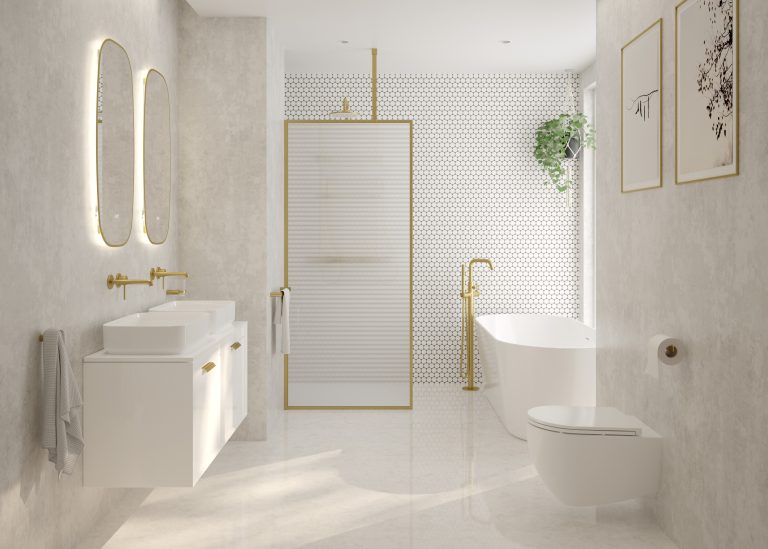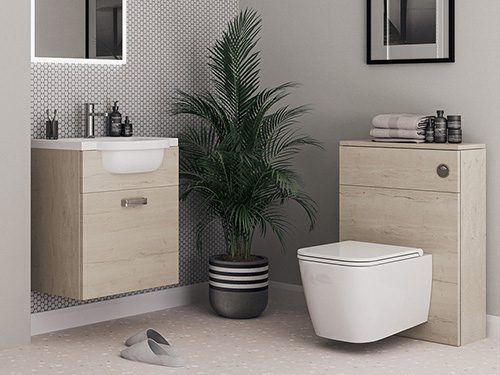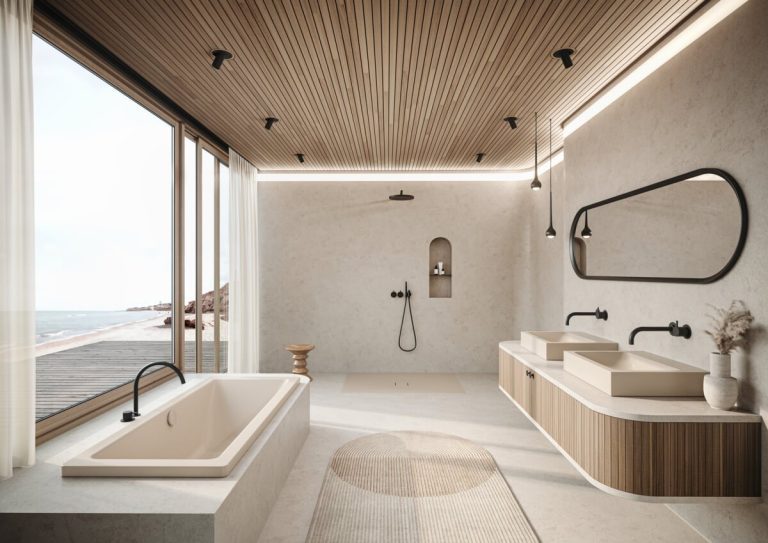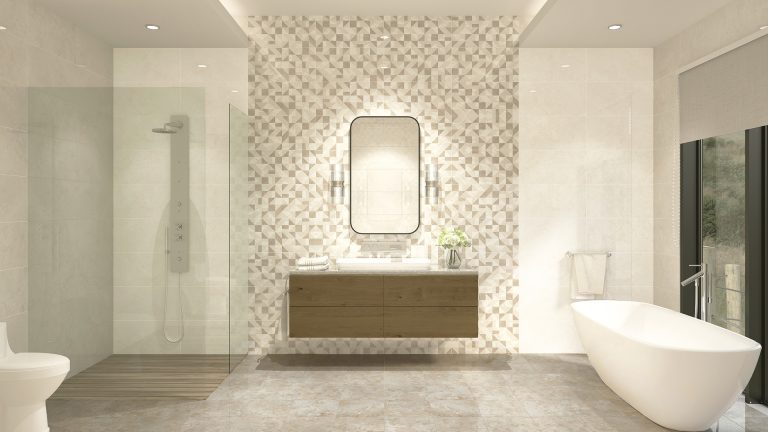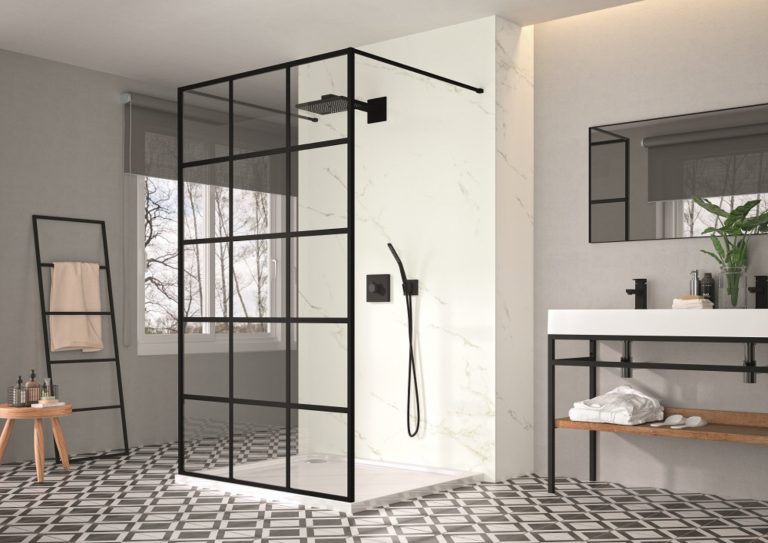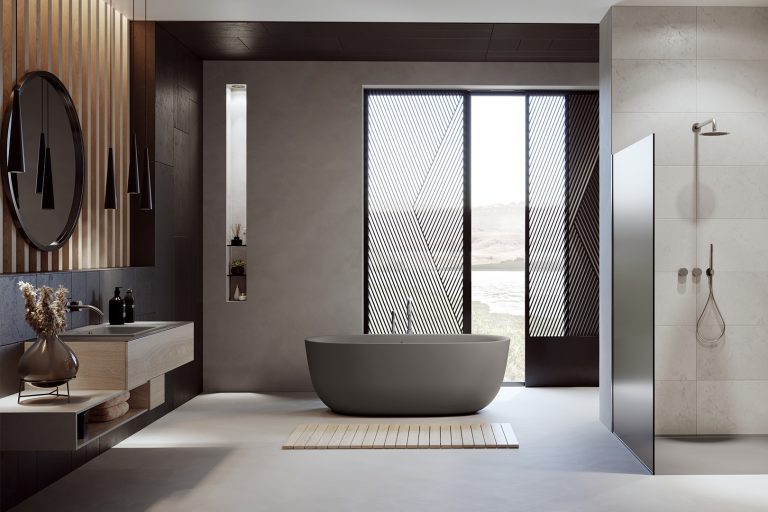Eco-Friendly Bathroom Design Ideas for UK Homes: Practical Ways to Create a Greener Space
Designing an eco-friendly bathroom doesn’t mean sacrificing style, comfort or convenience. In fact, some of the most elegant and contemporary bathrooms in the UK are now being designed with sustainability at their core. Whether you’re starting a full renovation or making smaller upgrades, there are plenty of practical ways to reduce your environmental footprint, save water and energy, and still enjoy a beautifully designed space.
Below, you’ll find a fresh take on eco-conscious bathroom design—complete with inspiration, examples, and simple changes you can adopt today.
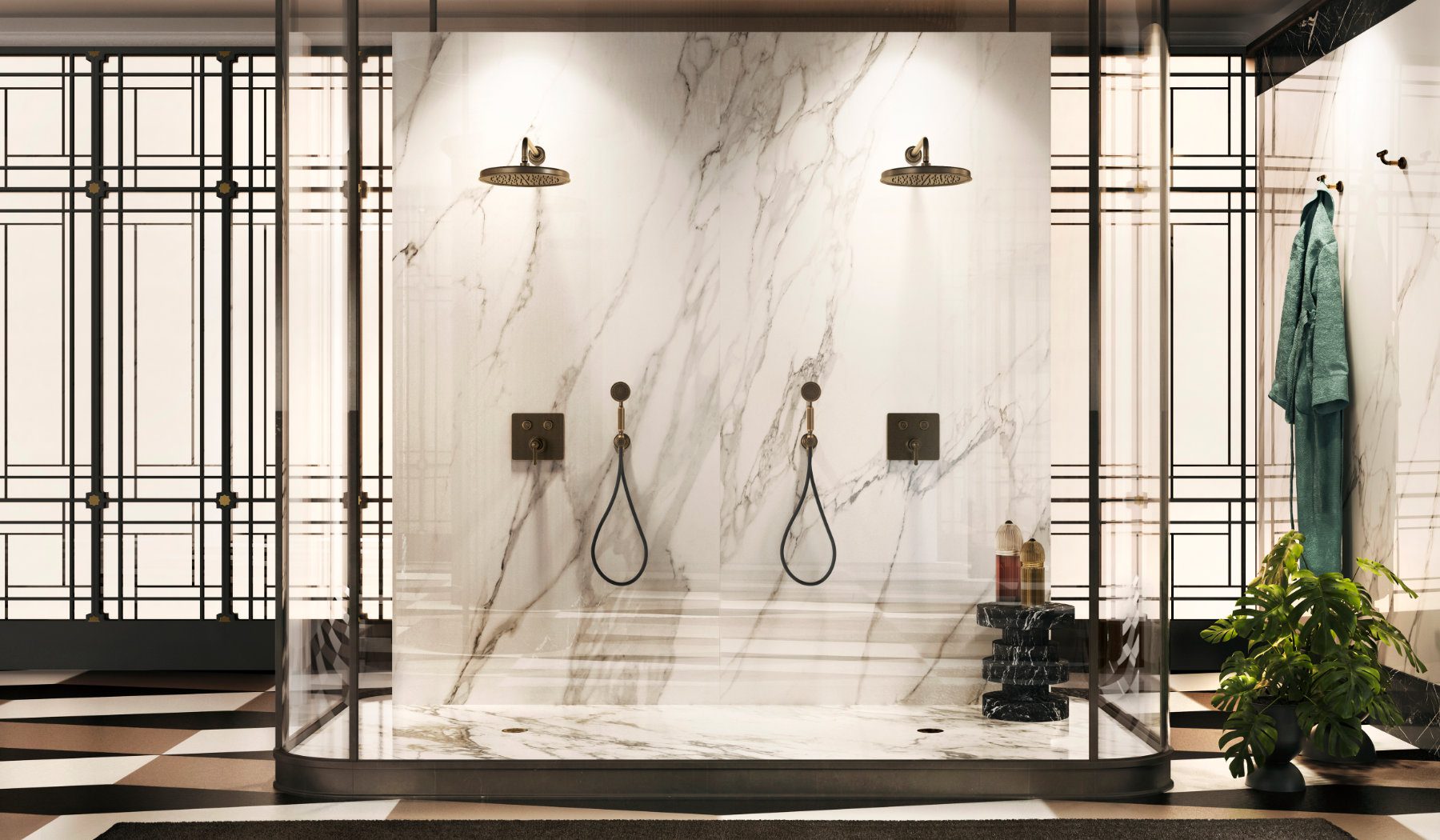
Why Eco-Friendly Bathroom Design Matters
Bathrooms may be one of the smallest rooms in your home, but they use a surprisingly large amount of water and energy. From power-hungry lighting and heated mirrors to water-guzzling toilets and baths, a poorly designed bathroom can have a big impact on your household bills and the environment. By switching to more efficient products and choosing sustainable materials, you can significantly reduce your water usage, cut down on plastic waste, and create a healthier environment for you and your family.
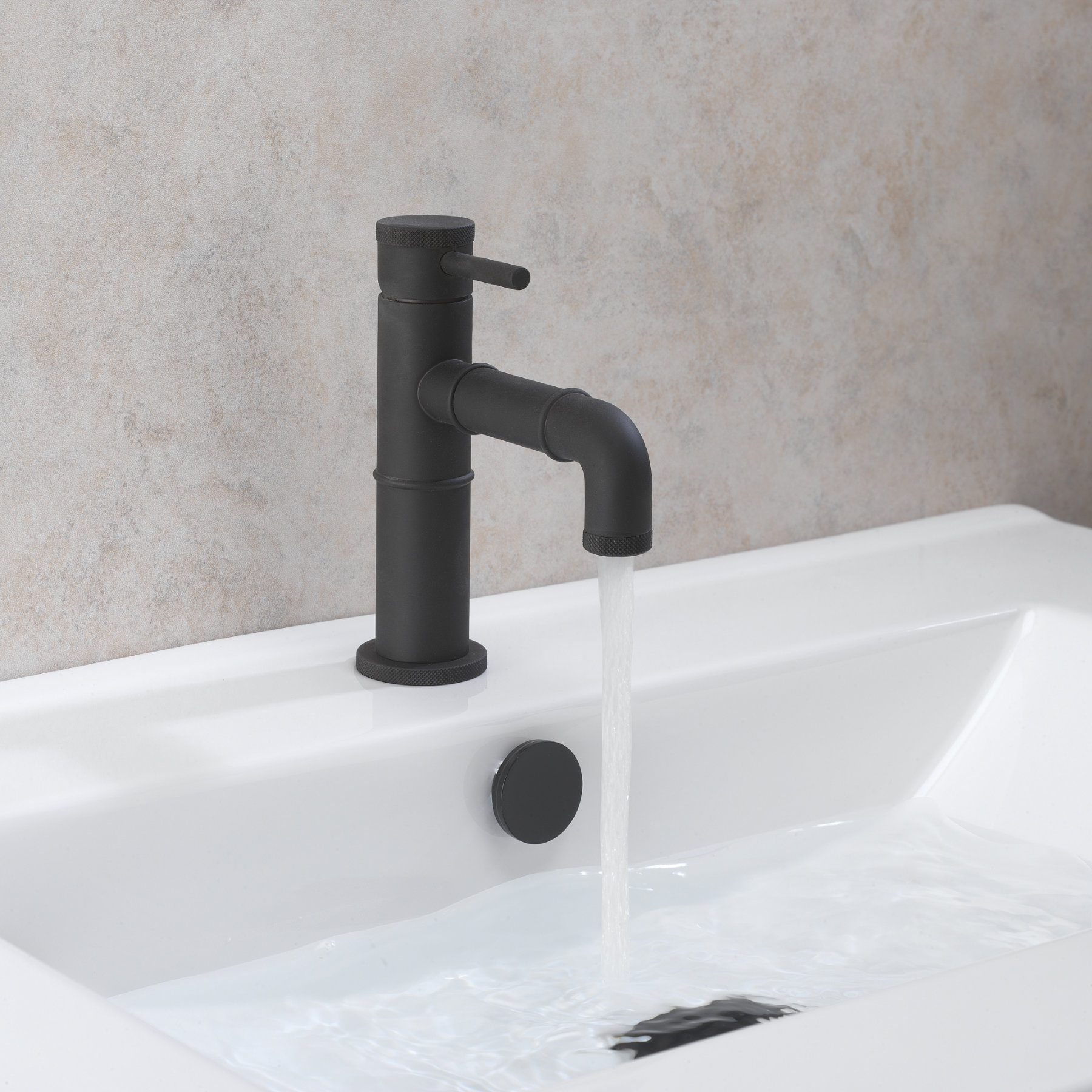
1. Start with Water-Saving Features
Water efficiency is the most important consideration in an eco-conscious bathroom. In UK homes, bathrooms account for nearly 70% of domestic water use. Swapping out old fixtures for modern alternatives can make a noticeable difference.
- Eco Toilets
Choose a dual-flush toilet that gives you the option of using less water for liquid waste. Brands like Ramon Soler offer WCs with smart flush technology that uses significantly less water without compromising performance.
- Low-Flow Taps and Showers
Look for basin taps and thermostatic showers with aerators or eco-mode settings. These reduce water consumption by mixing air into the stream without reducing pressure. Ramon Soler and Sonas have excellent ranges that focus on water efficiency without skimping on style.
- Eco Bath Options
If you’re a bath lover, opt for a shallower tub that fills faster and uses less water. Alternatively, consider a compact soaking bath—ideal for smaller UK bathrooms. Pair it with a thermostatic tap to avoid unnecessary heat and water wastage.

2. Choose Sustainable Bathroom Materials
The materials you choose can have a lasting impact. From flooring to vanity units, look for eco-friendly bathroom options that are responsibly sourced, durable, and made to last:
- FSC-Certified Timber
Vanity units and wall-hung bathroom furniture made from responsibly sourced wood or bamboo provide a natural look without environmental guilt. UK homeowners are increasingly opting for bespoke furniture made using FSC-certified timber, offering longevity and lower embodied carbon.
- Recycled Worktops and Surfaces
Worktops made from recycled glass, stone composites, or repurposed materials are becoming more popular in eco bathrooms. High-quality bathroom brands like Acquabella offer sleek, modern basins and worktops made from environmentally conscious materials, designed with longevity in mind.
- Porcelain and Ceramic Tiles
While not recycled, ceramic and porcelain tiles have a long lifespan and are easy to clean, reducing the need for harsh cleaning chemicals. Look for manufacturers with responsible production practices, ideally those using solar-powered kilns or recycling water during manufacturing.
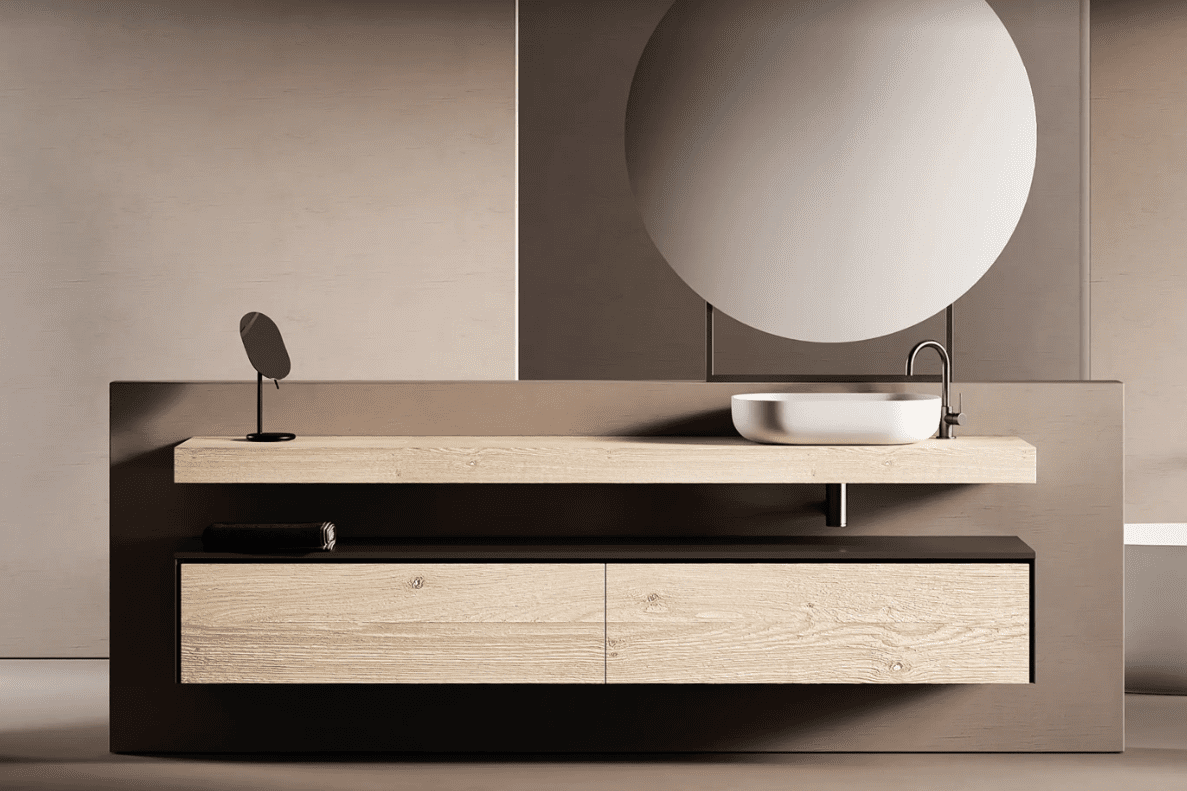
3. Ventilation and Heating: Smarter and Greener
Reducing energy consumption doesn’t just apply to the boiler. The way you heat and ventilate your bathroom can have a major impact on sustainability.
- Smart Heating Controls
Install zone-specific smart heating controls for your sustainable bathroom design. This ensures your heated towel rail or underfloor heating is only on when needed, rather than running constantly.
- Infrared Heating Panels
These are an energy-efficient alternative to traditional electric radiators, offering warmth on demand. They can also be combined with mirrors to save space and power.
- Efficient Extractor Fans
Make sure your bathroom fan has a humidity sensor and a low-energy motor. It will only run when necessary, reducing power use while still preventing damp and mould.
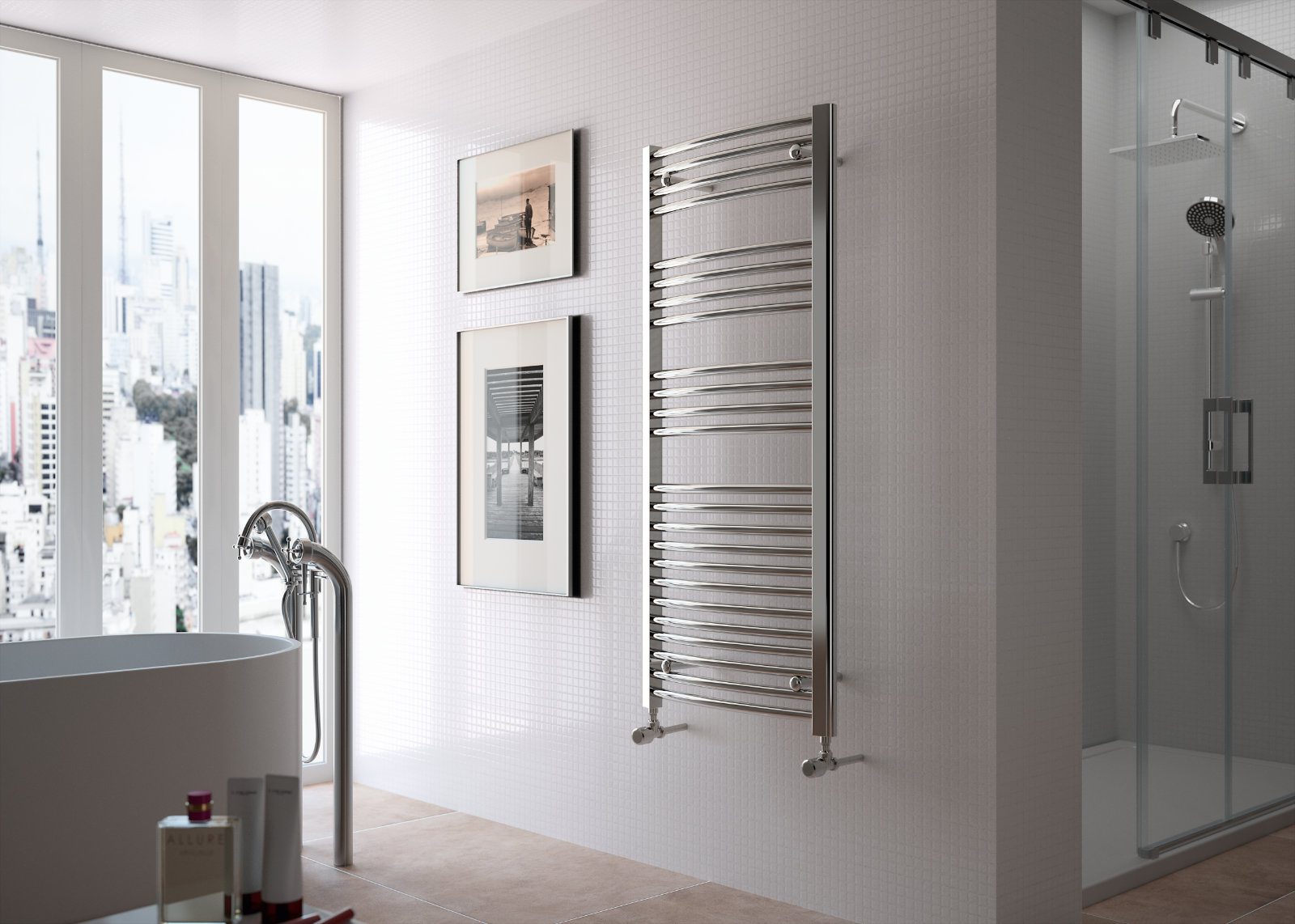
4. Switch to Sustainable Bathroom Brands
Some bathroom brands are leading the way in sustainable bathroom design. By choosing suppliers who prioritise eco materials, smart water-saving technology, and ethical manufacturing processes, you’re helping the environment without having to think twice:
- Sonas Bathrooms offer water-efficient fittings and high-quality sanitaryware with long lifespans.
- Acquabella focuses on sustainable materials and production techniques, with a range of textured worktops and shower trays made in Spain.
- Decosan creates bathroom furniture using renewable materials and offers custom sizing to reduce waste.
- Ramon Soler is known for precision-engineered taps and showers that focus on both efficiency and aesthetics.
- Roman manufactures high-quality shower enclosures in the UK, reducing carbon impact from shipping.
- Utopia Bathrooms is a British brand with a strong focus on sustainable production and a long product lifecycle.
- Interlübke, while traditionally associated with bedroom furniture, is increasingly popular in high-end UK bathroom design where sleek cabinetry is required, and they maintain strong eco credentials in their German production facilities.
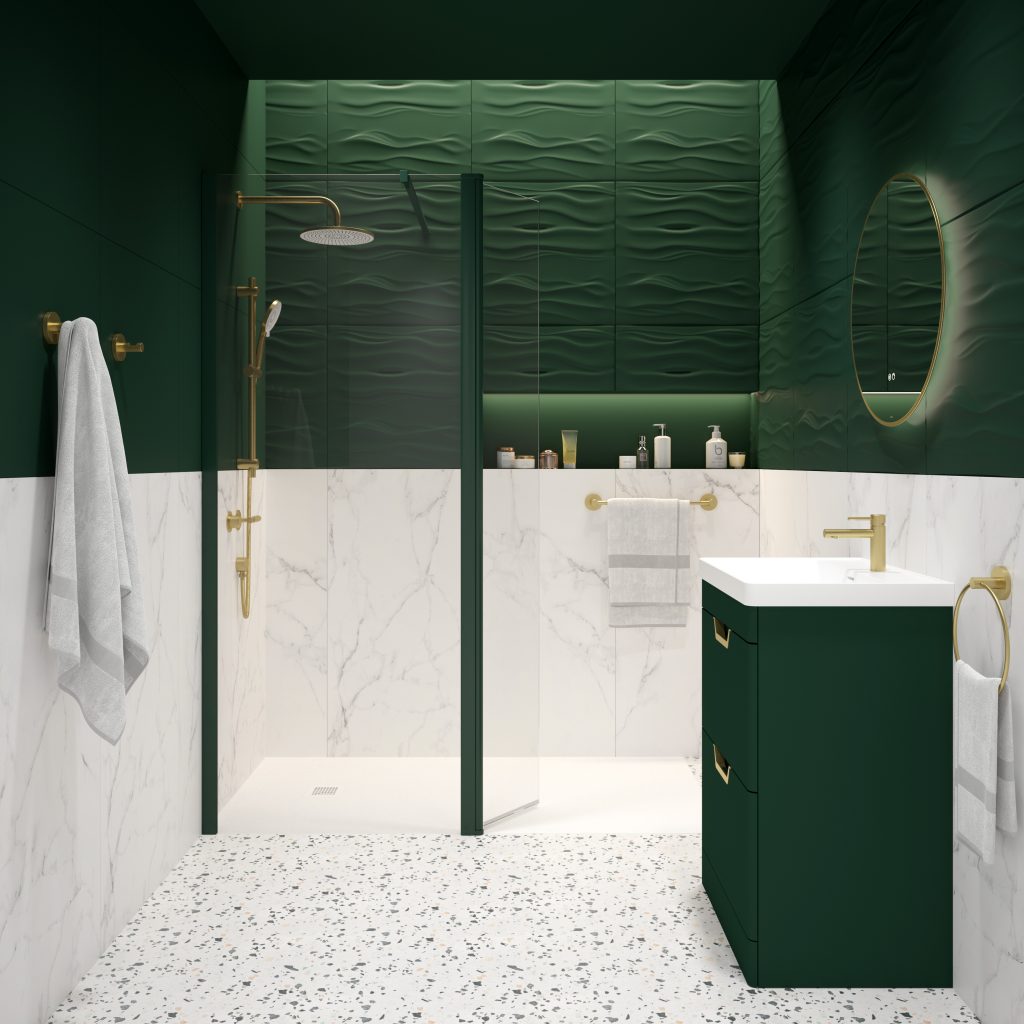
5. Bathroom Lighting and Power: Think LED and Motion Sensors
Lighting plays a crucial role in bathroom design, but it can also drain energy unnecessarily. The solution? Make smart choices that use less energy and last longer:
- LED Lighting: Switch to LED spotlights, mirror lights, and ambient lighting. These use up to 85% less energy than halogen bulbs.
- Motion Sensors: Add PIR sensors to mirror lights or ceiling spots so they switch off automatically when the bathroom is empty.
- Rechargeable Mirrors: Some mirrors now come with USB charging, meaning you can recharge them periodically rather than having them hardwired, saving on installation costs and electricity use.
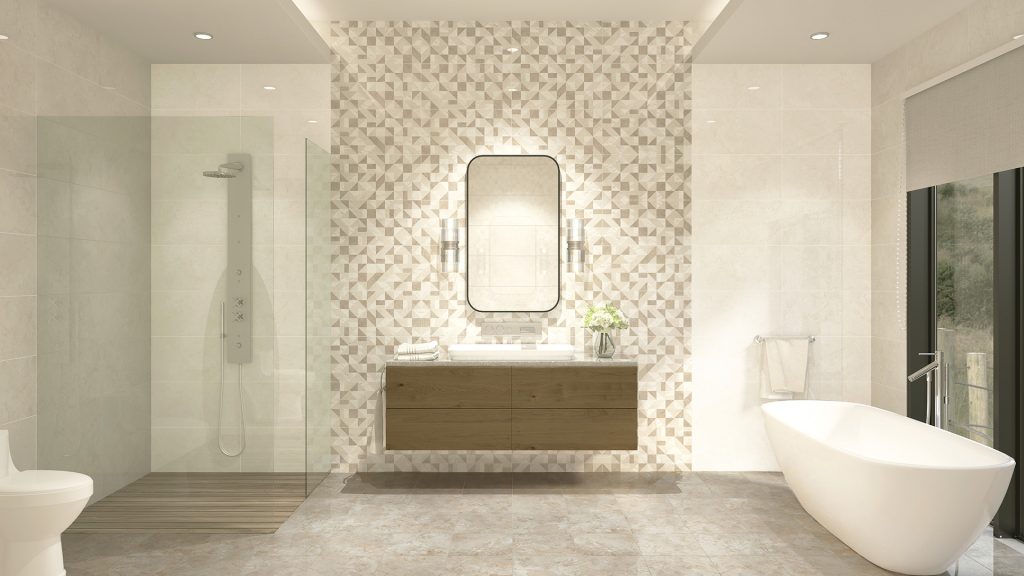
6. Minimise Plastic and Chemicals in Your Bathroom
An eco-friendly bathroom design isn’t just about fixtures and fittings—it’s about how you use the space every day:
- Swap disposable plastic bottles for refillable glass dispensers or wall-mounted pumps.
- Choose refillable cleaning products or eco cleaning tablets that dissolve in water—reducing packaging waste.
Avoid harsh chemicals, which can damage waterways. Try vinegar, bicarbonate of soda, or UK-made eco bathroom cleaners instead.
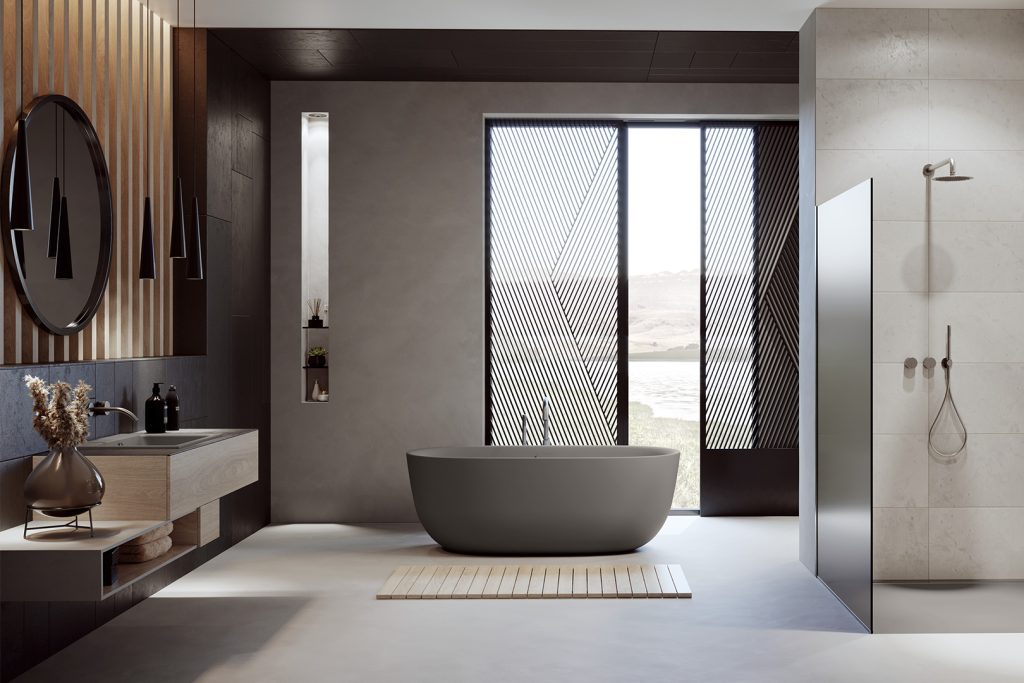
7. Eco-Friendly Bathroom Design for Longevity, Not Just Trends
Fast bathroom trends lead to fast waste. Instead, choosing timeless finishes, neutral colours, and quality fixtures will ensure your eco-bathroom design remains functional and stylish for many years—without the need for constant updates.
Stick to tried-and-tested materials like porcelain, natural wood, and high-quality metals. Brands like Utopia and Sonas offer classic ranges that suit both modern and traditional homes, making them ideal if you’re after a long-lasting look that won’t date.
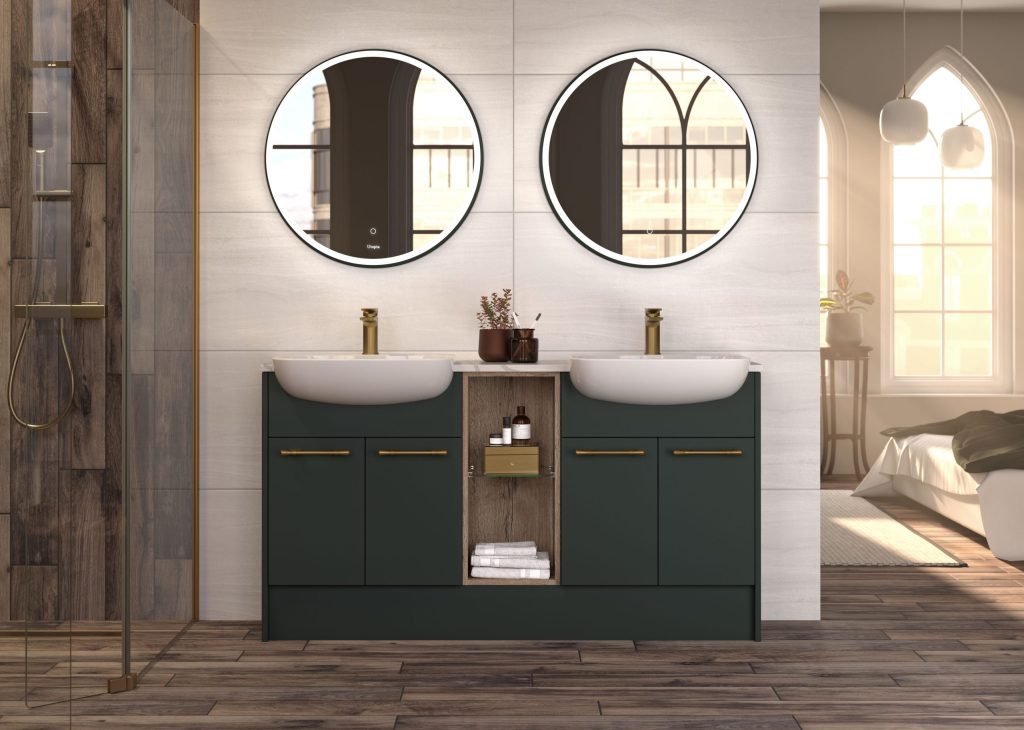
8. Install a Shower Instead of a Bath—Or Add Both Efficiently
If you’re redesigning your layout and want to reduce water usage, consider removing the bath entirely. A well-designed shower can be just as luxurious—especially with features like digital controls, rainfall heads, and built-in seating.
That said, if your household prefers both a bath and a shower, look for compact L-shaped bath designs or separate spaces that maximise efficiency. Walk-in shower screens from Roman or Acquabella can create a seamless, spa-like aesthetic using minimal materials and fewer joins—great for cleaning and longevity.
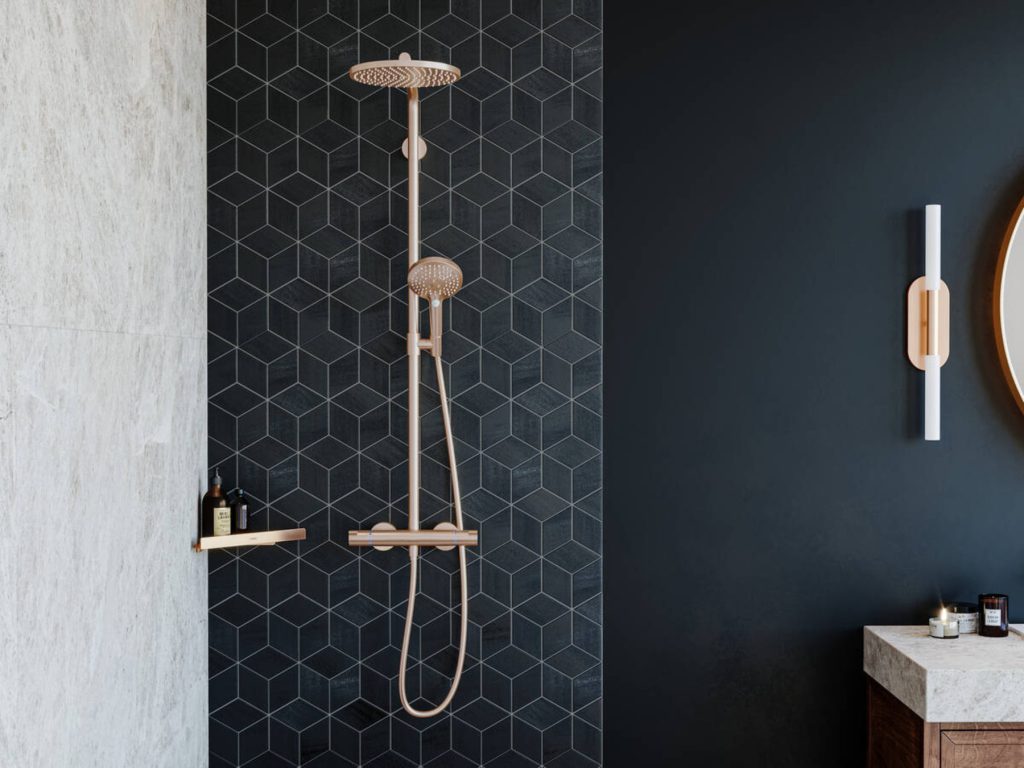
9. Use Local and British Suppliers Where Possible
Supporting UK-based bathroom companies helps reduce carbon emissions from overseas shipping and keeps your supply chain shorter and more reliable. Furniture brands such as Utopia and Roman are designed and manufactured here in Britain—ideal if you’re trying to support local businesses and reduce your environmental impact.
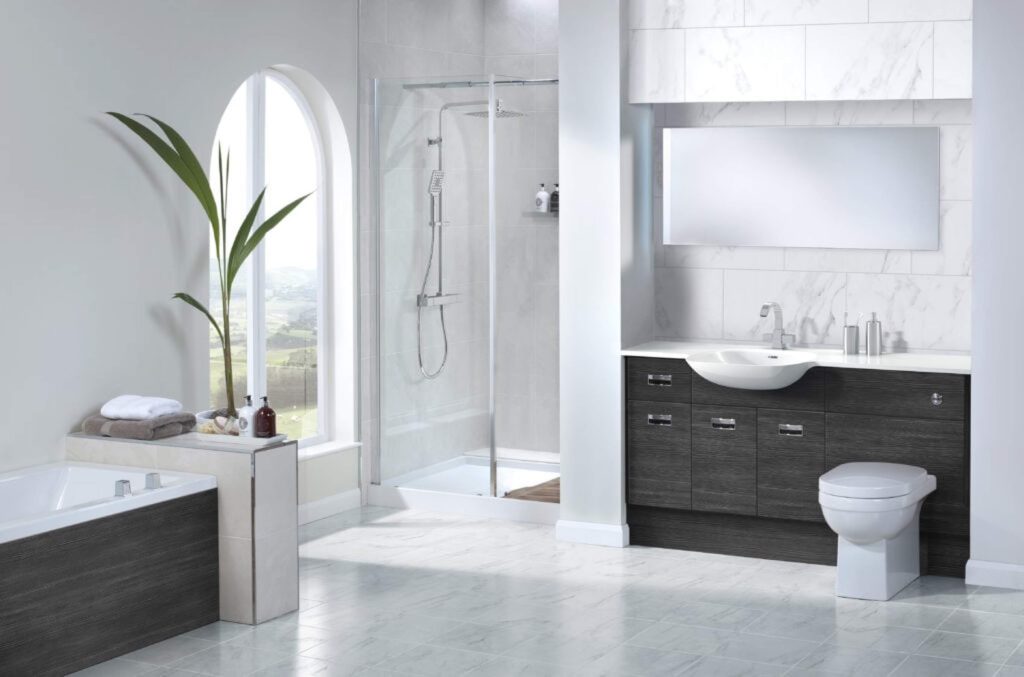
Final Thoughts
Designing eco-friendly bathrooms doesn’t need to be complicated or expensive. Start by choosing one or two changes—whether that’s swapping your old showerhead for a low-flow model or upgrading your lighting to LEDs. Over time, each decision adds up to a bathroom that’s better for you and better for the planet.
If you’re planning a renovation, work with a local bathroom specialist who understands the importance of eco-friendly bathroom design. They’ll guide you through water-saving fixtures, sustainable materials, and brands that align with your values.
By making smarter choices today, you’re creating a space that’s ready for tomorrow.
